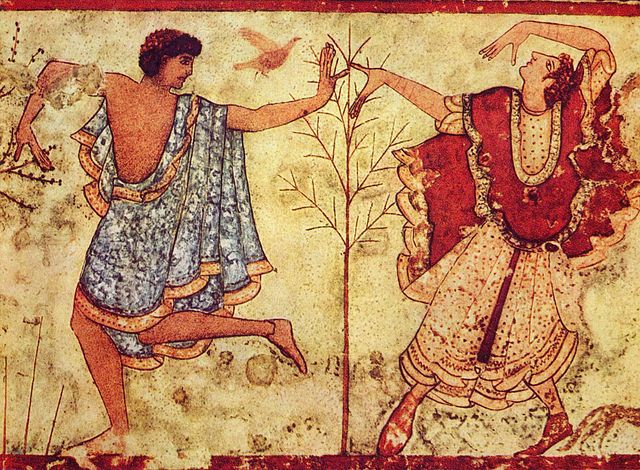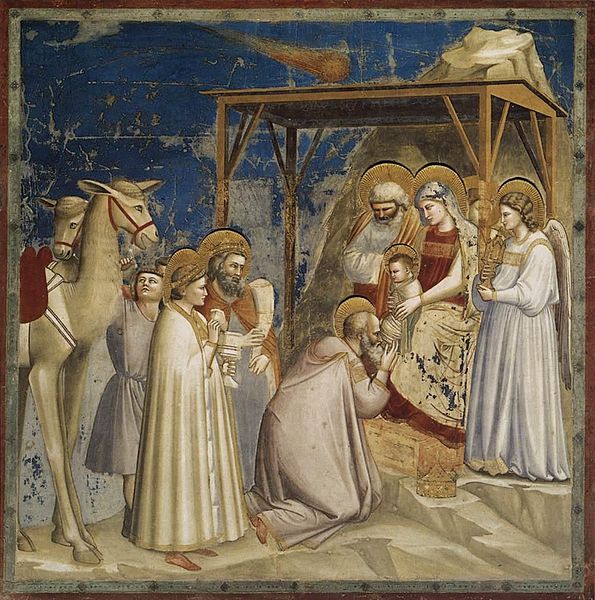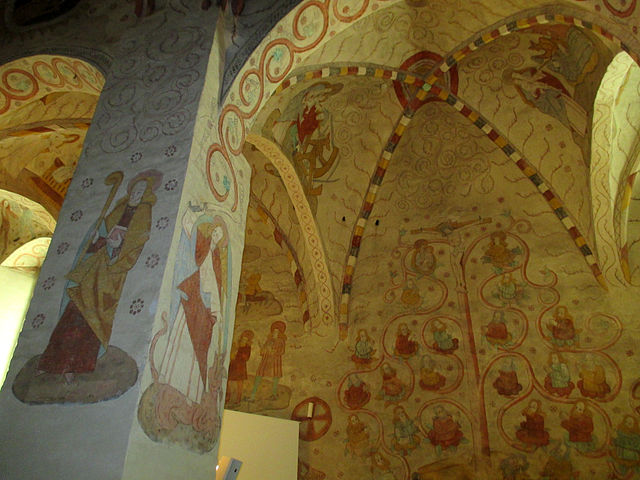Fresco is a technique of mural painting executed upon freshly laid ("wet") lime plaster. Water is used as the vehicle for the dry-powder pigment to merge with the plaster, and with the setting of the plaster, the painting becomes an integral part of the wall. The word fresco is derived from the Italian adjective fresco meaning "fresh", and may thus be contrasted with fresco-secco or secco mural painting techniques, which are applied to dried plaster, to supplement painting in fresco. The fresco technique has been employed since antiquity and is closely associated with Italian Renaissance painting.
The Creation of Adam, a detail of the fresco Sistine Chapel ceiling by Michelangelo
Etruscan fresco. Detail of two dancers from the Tomb of the Triclinium in the Necropolis of Monterozzi 470 BC, Tarquinia, Lazio, Italy
A Roman fresco of a young man from the Villa di Arianna, Stabiae, 1st century AD.
Fresco by Giotto, Scrovegni Chapel in Padua. Sky and blue mantle of Maria were painted a secco, and large part of the painting is now lost
A mural is any piece of graphic artwork that is painted or applied directly to a wall, ceiling or other permanent substrate. Mural techniques include fresco, mosaic, graffiti and marouflage.
Ceiling painting, by Jean-André Rixens. Salle des Illustres, Le Capitole, Toulouse, France
Prehistoric Egyptian mural painted on a Nekhen tomb wall c. 3,500 B.C. with aspects in the Gerzeh culture style
Jataka tales from the Ajanta Caves, present-day Maharashtra, India, 7th century CE.
Murals from the 16th century at the St. Lawrence Church of Lohja








